25 Leaders Transforming Manufacturing
In 2021, Smart Manufacturing started asking the leaders transforming manufacturing what effect the coronavirus pandemic has had on their business. Not only do the stories continue to amaze, we’re also seeing some of the trickle down effects of COVID-19 emerge in their answers.
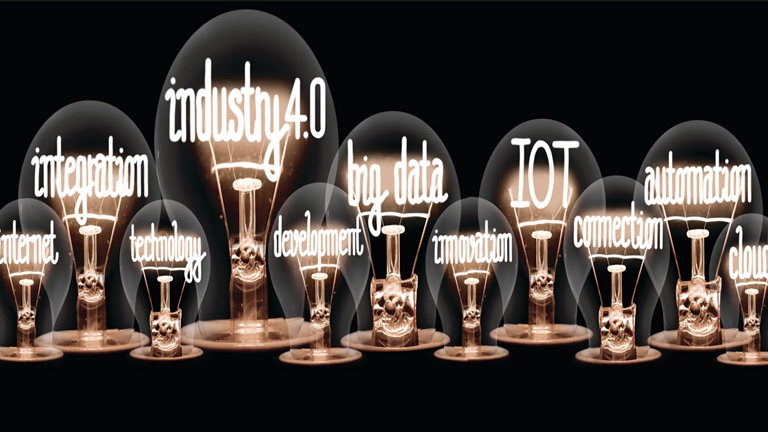
Two respondents said reshoring—bringing manufacturing back to the United States—is happening. One is electronics contract manufacturer Electro Soft Inc., whose customers are asking the Pittsburgh firm to produce more, and the other is at Amazon Web Services.
“The near shoring and re-shoring of manufacturing is real and a moment for companies to not just implement ‘the tried and true,’ but to change their business processes and technology stacks to be more nimble,” said Douglas Bellin, general manager, smart factory and Industry 4.0, AWS.
The primary reason for reversing offshoring is, of course, supply chain problems. And the catalyst for those issues is the pandemic, from which awe-inspiring stories continue to emerge.
For instance, the team at Oak Ridge National Laboratory’s Carbon Fiber Technology Facility figured out how to produce N-95 media for face masks, and then transferred that technology to an industrial partner that makes diesel filters. Their collaboration enabled production of over 3 million masks a day.
More than two years into the pandemic, corporations of all sizes, startups, public-private partnerships and universities alike have continued to churn out novel ideas and innovative products along with staples we depend on, creating opportunities for the leadership that’s demonstrated on the next pages to emerge.

Kira Barton, Ph.D.
Associate Professor, University of Michigan (U-M)
The lure of smart manufacturing (SM) for Barton was heightened by the industry weaknesses revealed during the pandemic. “The pandemic has provided an unprecedented example of the need for improved agility and intelligent decision making in the manufacturing sector, including the supply chain,” she said. “This has spurred additional research initiatives and funding opportunities within this domain, as well as strong industry collaborations.” Barton and her team at U-M created a requirements-driven digital twin (DT) framework that defines the specifications necessary to enable DT re-usability, interoperability, interchangeability, maintainability, extensibility and autonomy across a broad range of applications. “I think the development of a … framework, as well as the demonstration and implementation of this framework on various industrially relevant problems is our biggest accomplishment,” she said. “We would like to continue to be leaders in this space.” And the lure of SM? “Smart manufacturing brings together concepts from robotics, artificial intelligence and cyber-physical systems to harness information for more intelligent decision making within the manufacturing industry,” Barton said. “This provides a unique opportunity to work across several domains on a societally important problem.”
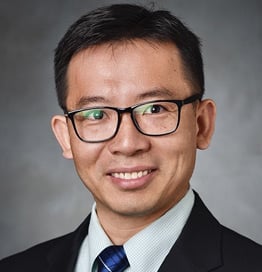
Hui Yang, Ph.D.
Professor, Pennsylvania State University
Yang’s research lab focuses on the design and development of new “sensing-modeling-optimization” technologies to investigate nonlinear, stochastic dynamics in manufacturing for quality improvement. Among their most recent work, Yang and his research team designed a new differential privacy method to enable automated protections for sensitive data by adding “noise” to deter would-be hackers; leveraged the new generation of IoT and distributed computing to develop new network models using a stochastic approach for machine information processing and condition monitoring; and designed new Six Sigma methods for additive manufacturing quality control. “Like an ecosystem, we have people working in isolated efforts in different areas of additive manufacturing, and systems engineers can help connect the dots to provide a framework for quality management,” Yang said. “Quality is indispensable, and if we design a system-level framework of quality management from the start, then we have higher quality and better productivity at less cost. Ultimately, everyone wants to do high-precision, high-end manufacturing, but if quality suffers at any step during production, you lose the competitive advantage needed for the global market.”

Eric M. Johnson, Ph.D.
Senior Manager, Additive Manufacturing Research Lab,
Eaton Corporation
Prior to getting into additive manufacturing, Johnson spent his career working on how manufacturing impacts materials and ultimately the durability of products. “Then in 2013, my employer at the time decided to buy a metal 3D printer,” he said. “As a metallurgist, I could not pass up the opportunity to work on such a cool technology. Once I started working in the field, my eyes were opened to the opportunities that additive manufacturing (AM) could bring to design, manufacturing and the supply chain.” He joined the AM community, built relationships and learned more about 3D printing. “I owe so much to the greater AM community for the awesome technology that has been developed and fantastic ideas that have inspired the adopters of additive manufacturing like me,” he said. Johnson is also inspired by Eaton’s wholehearted use of AM and the dedication of its teams that helped bring AM production of aerospace parts to fruition in record time. “I believe we can change the way manufacturing is done and this is my goal for the future!” he said.

Douglas Bellin
General Manager, Smart Factory and Industry 4.0,
Amazon Web Services
In his role to oversee the overall strategy and roadmap for Amazon Web Services for Industry, Bellin has a front-row seat to spot trends across manufacturing. One trend he sees is the fast pace of change. “We are at a critical inflection point in the market and the acceleration of change is increasing.” he said. “In the past, the market would see changes that were 10-20 years in timeframes. Now, we see market changes and improvements that happen in under five years or quicker.” In addition, many of the technologies that are associated with Industry 4.0, such as remote monitoring and operations, self-correcting manufacturing, A.I. and machine learning, Bellin now sees as must-haves. This Six Sigma green belt, who started his career by working every job in a steel factory, also sees opportunity in the pandemic-related supply chain kinks. “The near shoring and re-shoring of manufacturing is real and a moment for companies to not just implement ‘the tried and true,’ but to change their business processes and technology stacks to be more nimble,” he said.

Jennifer Tisdale
CEO, GRIMM
Tisdale is a cyber-economics strategist noted for building cybersecurity programs and strategies for industry, government and academia. Her company’s focus areas include the security of cyber-physical systems where hardware and software converge, networks, applications security testing, training and consulting. Her expertise is concentrated on the security of connected, cyber-physical systems and technologies, including the Industrial Internet of Things, critical infrastructure and advanced transportation mobility. Tisdale possesses a unique blend of experience in the defense, automotive, manufacturing and tech industries. She previously was cyber-mobility program manager for the Michigan Economic Development Corporation (MEDC). At MEDC, Tisdale was responsible for supporting the automotive and defense industries by merging smart mobility and cybersecurity to advance development of connected and autonomous vehicles. “Technology introduces many benefits to manufacturing but also security risk,” she said. “I am inspired to advocate and educate on the importance of sound cybersecurity practices for our manufacturers to help protect their businesses and quality of their products. I also want to make certain every manufacturer understands there are resources available to improve their cybersecurity posture.”

Thomas Bollenbach, Ph.D.
Chief Technology Officer,
Advanced Regenerative Manufacturing Institute (ARMI)
Bollenbach is leading efforts among the members of BioFabUSA, an ARMI program, to use smart manufacturing for cell, tissue and organ fabrication. Among their achievements are a SMAC (scalable, modular, automated and closed) manufacturing platform and a Deep Tissue Characterization Center. They’re also developing real-time, sensor-based platforms and data analytics for in-process and final-product quality control to overcome hurdles posed when smart manufacturing principles are not applied. “SMAC and deep characterization will enable quality-by-design manufacturing, which is essential for the decades-old concept of manufactured tissues and organs to become economically feasible,” Bollenbach said. In the future, he sees an increase in the biofabrication industry’s ability to monitor and control manufacturing through real-time data acquisition and processing that leverages tools like A.I. “I see this as leading to a shift from quality control practices that are currently performed in the lab, using the traditional tools of the analytical chemist, to a technician monitoring sensor outputs,” Bollenbach said. “This will also lead to a change in the way regulatory agencies like the FDA review and approve the manufacturing processes that are presented to them.”

Akhila Tadinada
Chief Technology Officer, Xemelgo Inc.
Nothing gives Tadinada greater joy than creating software for manufacturers. “Manufacturers are the true builders of our economies,” she said. She and a colleague at a former employer established the Seattle startup in 2018 to offer turnkey Industry 4.0 apps to track raw materials, work in progress, assets, shipment and finished goods. “Xemelgo’s digital assistants ensure that the manufacturer can focus on getting the work done while the Xemelgo software works in the background to ensure that everything is on track,” she said. For inspiration, Tadinada looks to her dad’s career in one of India’s biggest power generation equipment manufacturing companies, where she visited as a girl, and to Amazon. “Amazon started with a small little website selling books 30 years ago and eventually re-imagined every aspect of retail operations,” she said. “We believe manufacturing is getting started on a similar journey. As we get every aspect of manufacturing connected and real-time data flowing through, manufacturers will be able to build highly customized products at a moment’s notice and service their end customers’ demand like never before.”
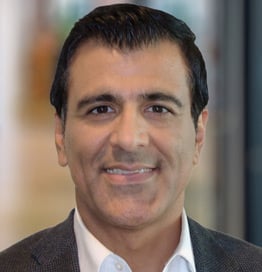
Sachin Lulla
Americas Consulting Sector Leader,
Advanced Manufacturing and Mobility, EY
The mission at EY, formerly known as Ernst & Young, is to create a better working world. Transforming manufacturing specifically is at the core of the mission for Lulla in his role as the manufacturing consulting leader. “Our biggest achievement has been the launch of our EY-Nottingham Spirk Innovation Hub in Cleveland to showcase the future of smart manufacturing and digital transformation for our clients,” he said. “We are on a mission to partner with every manufacturing company to transform their products, customer experience and operational resiliency with digital technologies jointly with our ecosystem partners at our innovation hub.” EY also created a holistic approach to transform manufacturing companies with a methodology called Transformation Realized that takes a human-centered approach to apply “technology@speed” and “innovation@scale,” he said. Twenty-plus years’ consulting with auto manufacturing OEMs and being inspired as a child by his father, who founded a successful apparel manufacturing company, have clearly played a key role in his life. “It is in my DNA,” said Lulla of his journey to shape the future of manufacturing.

Malcolm J. Thompson, Ph.D.
Executive Director, NextFlex
NextFlex, an institute of Manufacturing USA, created a new type of electronics based on printed circuits that integrate thin, flexible electronic chips and printed interconnects that enable fast time to market, are low-cost, and are created through an eco-friendly manufacturing process. “We created a partnership with consortium members to solve problems collaboratively while also building an engineering and manufacturing organization within NextFlex,” Thompson said. “These two accomplishments have driven a measurable increase in the level of functionality and maturity of FHE (flexible hybrid electronics).” Thompson would like to welcome more NextFlex members, currently at over 100, to cover an even broader range of the supply chain and expand the number of its manufacturing partners as the institute works to advance widespread adoption of hybrid additive electronics, commercialization and applications. Critical to NextFlex’s work is its use of smart manufacturing. “We have implemented multiple methods of printing/additive processes to reduce cost and complexity in manufacturing,” he said. “In terms of electronics assembly, we utilize low temperature, non-solder flip chip die attach to be compatible with low temperature materials.”

Jay Flores
Founder, Invent the Change LLC
Flores merged his technical knowledge with entertainment to do STEM outreach to kids. He has a mechanical engineering degree, and is a former Global STEM Ambassador for Rockwell Automation. He’s also worked with FIRST. Flores’ entrepreneurial projects include founding Invent the Change LLC, a STEM-promoting organization. During the pandemic, when most activities and schools were shut down, he created a show on his YouTube channel, “It’s not Magic, It’s Science.” The show uses the entertainment aspect of magic, and science experiments disguised as magic tricks, to increase awareness and excitement about STEM. “Each experiment is as entertaining as it is educational and is fun for all ages,” he said. In his role as a Mystery Science Guide on Discovery Education’s Mystery Science Team, Flores nurtures curiosity by answering questions submitted by students such as, “How were LEGO bricks invented?” and “Why don’t people fall out of roller coasters when they go upside down?” Jay is also the host of the innovation competition television show “Make48,” which is filmed for PBS and reaches 96 percent of U.S. households.
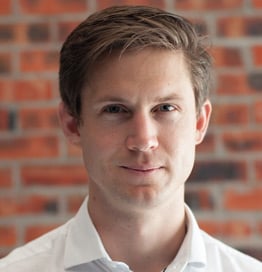
Frans Cronje
Co-founder and CEO, DataProphet (Pty.) Ltd.
When Cronje thinks of the future of smart manufacturing, he sees a pan-operational, self-optimizing ecosystem powered by A.I. but with people at the center. In the plant of the future, humans are empowered to improve their digital skills continuously. This will be necessary as they interface with increasingly smart machines that make new products and components with increasingly advanced materials. “Future manufacturing will also capture value with different metrics such as social and environmental benefit, cross-disciplinary collaboration and scalability of digital capabilities,” he said. Cronje established DataProphet in 2014 when he turned a consultancy into a company. Since then, he and his team of data engineers and data scientists have consistently helped customers reduce manufacturing defects by an average of 40 percent. Some of those customers have even, through DataProphet’s PRESCRIBE solution, achieved zero defects. Cronje’s efforts led to an invitation to join the World Economic Forum’s Global Innovators Community, made up of the world’s most promising startups, and a request to speak at the Annual Meeting of the New Champions, aka the “Summer Davos.”

Daniel Burseth
Vice President of Engineering, Eckhart
Eckhart combined a collaborative robot, machine vision and an autonomous mobile robot to make a fully automated, end-of-line inspection system. The system can identify incorrectly placed product decals, bad electrical connections and missing components for a commercial vehicle OEM. “Historically, manufacturers staff many people in inspection roles in which they are armed with a checklist on a clipboard and some basic training,” he said. “Humans are not great at repetitive inspection tasks and quality judgements vary significantly from one operator to the next. Despite best efforts to review quality, many companies end up shipping bad product out the door.” Automation inspection is in high demand as products increase in complexity and skilled labor becomes increasingly scarce. In addition to inspection and testing automation, Eckhart continues to see double digit growth in more traditional factory automation areas including sanding and grinding, machine tending, and the lifting and transport of heavy loads. “Automation is fundamentally about alleviating people from the most dull, dirty and dangerous activities in the factory,” said Burseth. “We take pride in the opportunity to make U.S. factories more desirable places to work.”
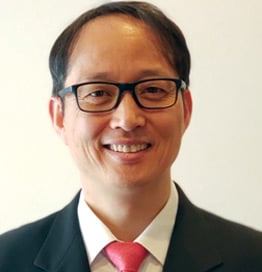
Martin Jun, Ph.D.
Associate Professor, Purdue University; CEO & Co-Founder, Maijker Corp.
Jun co-founded (with fellow honoree Chandra Nath, Ph.D.) Maijker Corp. to commercialize a sound sensor Jun developed to help understand a machine tool’s operation status, condition, process anomalies, health and more, much like the legendary factory worker who could tell by the way a machine sounds if it’s working correctly. He likens the contact-based, internal sensor to a stethoscope to detect each machine’s unique sequence of sounds that can be considered as speech and interpreted. Jun has also developed an immersive and interactive cyber-physical system (I2CPS) framework, which is based on the similarities of smart manufacturing architectures while emphasizing collaboration between humans and autonomy. In general, the autonomy modules are in cyberspace, and humans utilize them from applications. “Especially in the I2CPS framework, human cognition can be substituted for artificial intelligence,” Jun said. “The autonomy can control manufacturing systems instead of humans, and both humans and autonomy share the work of data analysis and association.” Through the work in his lab, Jun hopes to help small and medium-size manufacturers survive and thrive, goals made even harder to achieve during the pandemic, he said.

Thomas Hedberg Jr., Ph.D.
Mission Director, Acquisition and Industrial Security, Applied Research Laboratory for Intelligence and Security, University of Maryland
After 15 years working to develop standards and digital capabilities for model-based enterprise (MBE), digital thread and digital twin, Hedberg was recruited to build and lead a research team at the University of Maryland to study how to scale smart-manufacturing capabilities to entire supply chains. “We tell a joke that we started working on supply chain resiliency in early March 2020 when you could count on one hand the number of researchers focused on the topic,” he said. “Then fast forward to mid-March 2020 and the entire world was focused on supply chains.” Prior to the university, Hedberg worked at NIST, where he co-developed the NIST Smart Manufacturing Systems Test Bed that’s used by leading software companies to develop and test their products. The project earned him and his team a U.S. Department of Commerce Gold Medal, the highest honor given by the Secretary of Commerce for “distinguished and exceptional performance,” according to a government website. Hedberg was also instrumental in the creation of the American Society of Mechanical Engineers’ MBE Framework, whose first standard was published in March 2022.
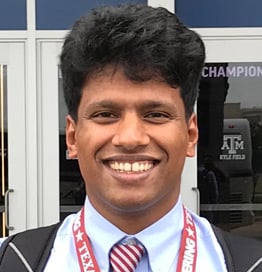
Chandra Nath, Ph.D.
Chief Technology Officer & Co-Founder, Maijker Corp.
When he worked at Hitachi America Ltd., Nath invented a novel signal acquisition method for online monitoring of manufacturing processes and tool condition. A patent has been published. More recently, with fellow honoree Martin Jun, Ph.D., and John J. Murphy, Nath started Maijker Corp. to commercialize an A.I.-based, non-invasive, simple and flexible plug-and-play machine monitoring system that uses a sound sensor that originated in Jun’s lab. Maijker received awards, with Nath as the principal investigator, from the National Science Foundation Seed Fund and Elevate Ventures Inc., Indianapolis, to continue the R&D and commercialization work for the system. Maijker began just as the pandemic started. Despite some COVID-induced initial delays in scheduling industry testing and adoption, the co-founders have been fortunate to sell a software product and already have the initial version of their machine monitoring system in use within their partners’ factories. One of the partners was so successful using the system he wants to deploy it more widely in his factory and offered to compensate the company, a phenomenon Nath deemed “a huge success.”

Craig Blue, Ph.D.
Director, Advanced Manufacturing Program, Oak Ridge National Laboratory
During a 25-year career in materials and manufacturing technologies R&D, Blue has amassed patents, publications and awards. But one of his proudest moments was seeing ORNL’s experts in manufacturing and materials, coupled with its facilities and capabilities, help out in the pandemic. He and his team transformed the Carbon Fiber Technology Facility at ORNL to produce N-95 media for face masks, and then transferred that technology to an industrial partner that makes diesel filters to enable the supply chain and production of over 3 million masks a day. They also used the digital thread—a technology Blue’s passionate about—to rapidly produce tooling for face masks and test tubes. In fact, ORNL’s Manufacturing Demonstration Facility, of which Blue was founding director, drove the creation and adoption of the digital framework and data analytics for manufacturing processes. “The digital thread is key to implementing advanced manufacturing and taking American manufacturing to the next level,” he said. “The technology enables companies to fully understand and control their transient manufacturing processes—to ensure part properties and reproduce identical parts time and again.”
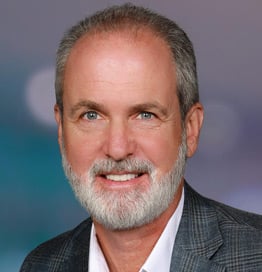
Matthew Cordner
Principal A&D Business Architect, HCL Technologies Inc.
After spending three decades designing, building and supporting vertical-lift aircraft, Cordner is applying his lessons learned to IT. “An aircraft is a complex system of carefully integrated systems, with trade-offs made in each to achieve the desired performance,” he said. “IT architecture is also a ‘system of systems’ designed for higher objectives.” Among the most critical objective is agility—the ability to rapidly sense and respond to daily changes in engineering, the factory and the supply chain, he said. “Billions have been invested in IT tools, yet few companies have integrated them with this overall objective in mind,” said Cordner. “This requires that PLM and ERP systems more effectively integrate to each other and the shop floor. At HCL, we call this Model Based Enterprise 2.0. We see renewed focus on ERP’s role in ensuring supply chain agility and resiliency. Modern ERPs such as SAP’s S/4HANA have been designed to be faster, less complex, more user friendly while providing far more capability than legacy tools.” He offers a gentle reminder: “Remember, the ultimate goal is to optimize your enterprise, not your applications.”
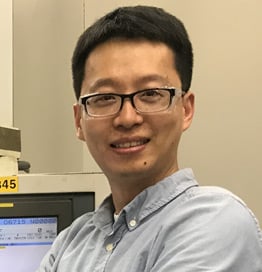
Yujie Chen, Ph.D.
Engineer, Digital Manufacturing and Machining,
Caterpillar Inc.
Chen started his career in manufacturing with Caterpillar in 2013, and has been working in advanced manufacturing-related areas ever since. His work involves developing and implementing manufacturing process modeling, and data exchange and analysis between manufacturing processes. “This is intended to automate the manufacturing process to ensure agility and resiliency,” he said. “For example, a robot can assist in scanning incoming material for variations, and then our advanced manufacturing systems can adjust to these variations more intelligently.” Through MxD, the digital manufacturing institute within Manufacturing USA, he led a team of more than 20 people from academia and industry in a funded project, according to a 2019 article in Peoria Magazine when it named him among 40 Leaders Under 40. COVID-19 illuminated the importance of smart manufacturing, he said. “With smart manufacturing, the manufacturing process status can be monitored, product quality can be predicted and design can be virtually validated,” said Chen. “Some people may be physically far away from manufacturing lines, but they can have even better insight and control of manufacturing with smart manufacturing technologies.”

Chinedum “Chi” Okwudire, Ph.D.
Founder and CTO, Ulendo; Associate Professor, Mechanical Engineering, University of Michigan
Okwudire and his colleagues have created new algorithms that leverage control theory, advanced modeling and sensing, and machine learning to boost the speed and precision of desktop and industrial-grade 3D printers at low cost. Manufacturers requested their FBS vibration compensation algorithm to help them speed up their 3D printers to meet the spike in demand brought about by the SARS-CoV-2 pandemic, but it wasn’t ready for commercial distribution at that time. “We were really inspired by the requests,” he said. In the meantime, the team is deploying their solutions on commercial printers. “It’s great to see our solutions leave the research lab and find success in the field,” said Okwudire. “We have lots more smart manufacturing solutions in development—like our SmartScan algorithm for laser-based 3D printing of metals—that we are excited to bring to the 3D printing industry and beyond.” His company’s name, Ulendo, means “journey” or “voyage” in the Chichewa language. The company’s team is on a journey “to use software to enable manufacturing machines to achieve their full potential as ubiquitous tools for modern manufacturing,” according to the company website.

Johan Bjorklund
CEO, Betacom
When Bjorklund became CEO at Betacom in 2019, his vision was for the future. Could Betacom’s wireless infrastructure for mobile operators be at the crossroads of Industry 4.0? He convened wireless industry leaders in finance, engineering, security, product management, sales and marketing to start a new business unit and a new Betacom service—Betacom 5G as a Service (5GaaS)—what the company calls the industry’s first fully managed private wireless service. “We developed a turnkey service, backed by a modern network operations center that manages security in addition to network operations,” he said. Prior to joining the team that acquired Betacom, Bjorklund co-founded and is chairman of the board of a passion project, software company Aiberry. Its software uses A.I. to analyze a person’s words, voice and facial expressions during a short, guided conversation to deliver critical insights to medical providers to help them diagnose and treat mental health disorders. “In a time where mental well-being is more important than ever, Aiberry is increasing access to care, enhancing early detection and enabling healthcare providers,” he said.
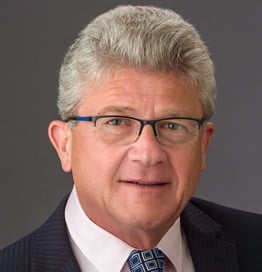
Sam Golan
Founder & CEO, High QA Inc.
In his 25 years of hands-on management experience in CAD/CAM and PLM, it became clear to Golan that smart manufacturing is relatively in a good place and moving in the right direction to address Industry 4.0 challenges. “What is dramatically behind, however, is the quality for manufacturing,” he said. In Golan’s view, quality for manufacturing is decades behind and is a huge bottleneck associated with high cost. Manufacturing automation is highly advanced compared to quality for manufacturing, with the gap growing daily, he said. “Quality can’t keep up with the pace,” said Golan. “Parts are getting smaller, (are) highly accurate with tighter tolerances and are accompanied by huge documentation submissions.” Golan built High QA’s solution by integrating quality and manufacturing from the beginning—2D drawing or 3D model. It has been adopted by close to 1,000 customers, ranging from OEMs to all supply chain levels. Golan’s not stopping there. “Our next achievement begins with a new product launch that enables the supply chain to become an integral part of the manufacturing quality process,” he said.

Paul Van Metre
Co-Founder & CRO, ProShop ERP
Van Metre and his partners created ProShop ERP, a paperless, digital manufacturing ecosystem, so they could run their former CNC machine shop using smart tools and processes. When other companies “were very interested” in what they had built, the partners sold the shop they had run for 17 years so they could focus their efforts on the software. “Our team at ProShop has helped bring life-changing impact to hundreds of manufacturing companies, helping clients significantly scale much faster than they could otherwise, reduce costs, increase throughput, improve their bottom lines, create more jobs and improve their communities,” he said. “We believe this is very important work to support this industry and the overall economy.” Industry apparently likes what Van Metre, Matthew Carrico and Kelsey Heikoop created. “The pandemic has led to tremendous growth at ProShop, and we’ve more than doubled our team and client base,” Van Metre said. “Most manufacturing companies have realized they must adopt smart tools to help run their businesses, and that paper documents and legacy software systems won’t allow them to compete at the level needed today.”

Karla Trotman
President & CEO, Electro Soft Inc.
When the pandemic interrupted industry supply chains, domestic manufacturers moved to strengthen the pipelines by reversing offshoring. “Companies are now realizing that a global supply chain only works if all elements are perfect,” said Trotman. “But what happens when conditions are not perfect? Revenue suffers. Companies are not willing to take that risk, so reshoring is happening at a larger scale and our customers are now asking us to take on larger volumes of work.” There’s a glitch, though, with a shortage of qualified workers. Trotman and other manufacturers in her region of Pennsylvania found their own solution to the issue by banding together 15 years ago and creating the Southeastern Pennsylvania Manufacturing Alliance (SEPMA). Trotman is co-chair. The SEPMA established a boot camp and career pathway to prepare entry-level workers “who at least have a foundation in manufacturing when they walk in the door” for its employer partners. Hundreds of boot camp graduates have been hired. Since starting in 2007, SEPMA has provided technical training to thousands of people and exposed hundreds of middle and high schoolers to manufacturing careers.

David Vasko
Senior Director, Advanced Technology, Rockwell Automation
You might want to call Vasko a pioneer in autonomous control. “Decades ago, I was able to demonstrate autonomous control by applying physical simulation in conjunction with A.I. to create a living replica of a factory, what today is commonly called a digital twin,” he said about one of three critical developments in smart manufacturing to which he contributed. The other two? He was one of the architects who innovated the transition from PLCs to general purpose automation controllers leveraging industrial networks; and he was an architect for functional safety, which enabled the use of easier-to-apply safety controllers and networks to replace difficult-to-use relays. Vasko, who holds more than 75 patents for smart manufacturing innovations, says, “We see the dream we had 20 years ago—to create intelligent, interconnected manufacturing—coming to life each day. I only see this expanding in the future with enhanced supply chain flexibility and resiliency, increased availability of experts as extended reality and A.I./machine learning become easier to use and explain, and a safer, more skilled workforce that leverages the technology to produce in a more efficient, greener way.”

Howard D. Grimes, Ph.D.
CEO, Cybersecurity Manufacturing Innovation Institute (CyManII)
Grimes is helping secure manufacturing operations and supply chain networks, the biggest, most complex targets for cybercriminals. Established in 2020 by The University of Texas at San Antonio, where Grimes is also the associate vice president for institutional initiatives, CyManII has developed early instantiations of a smart manufacturing architecture (SMA) that overlays onto both smart and legacy systems. CyManII has also started to successfully demonstrate how this architecture improves productivity and shrinks the cyber attack surface area. It has also introduced a novel modeling and simulation approach called “CEEQ,” or Cybersecurity Energy Emissions Quantification. “CEEQ allows us to validate and verify the energy efficiency gains and reductions in emissions, and quantitate the extent of cyber hardening achieved via SMA,” he said. As CyManII cyber secures domestic manufacturing Grimes sees, “a smart manufacturing environment that is not subject to theft of IP, where supply chains are resilient and secure and manufacturing sectors become significantly less vulnerable to advanced persistent threats and acts of sabotage by our adversaries. All of this leads to the U.S. being globally competitive.”






